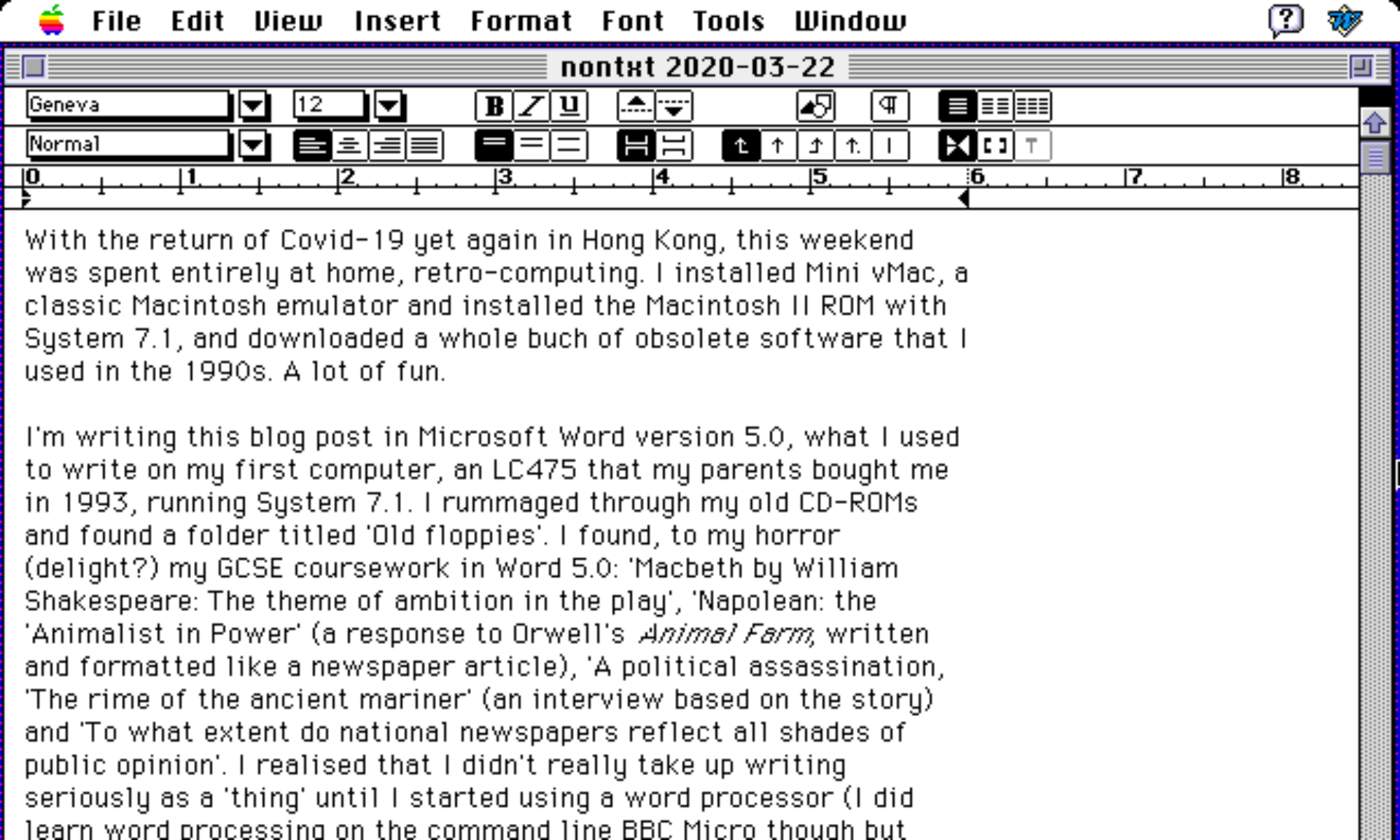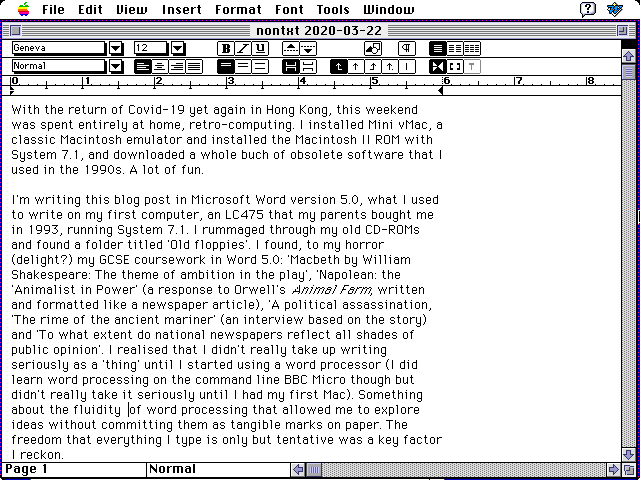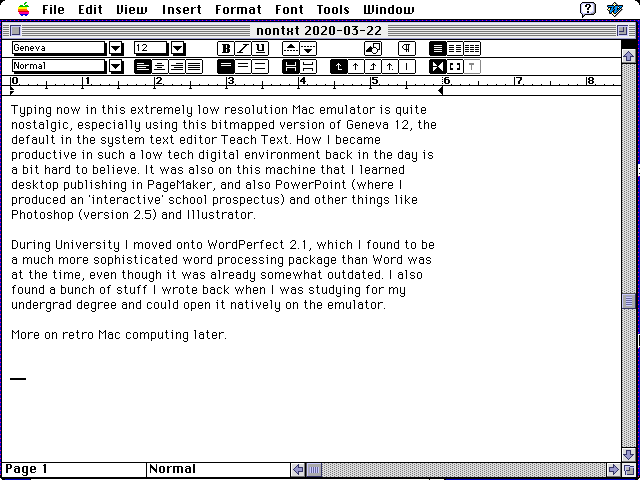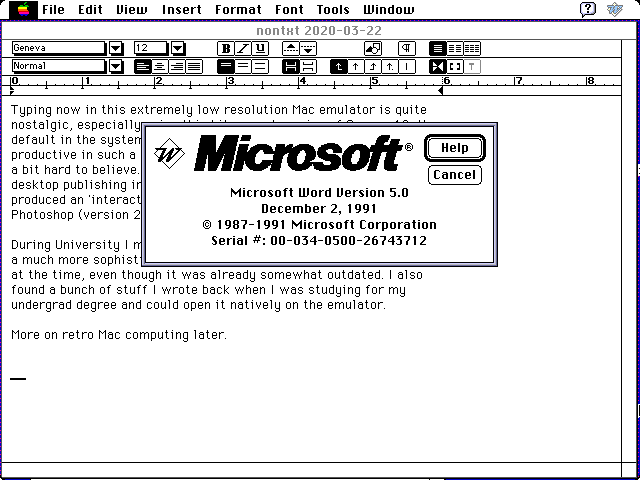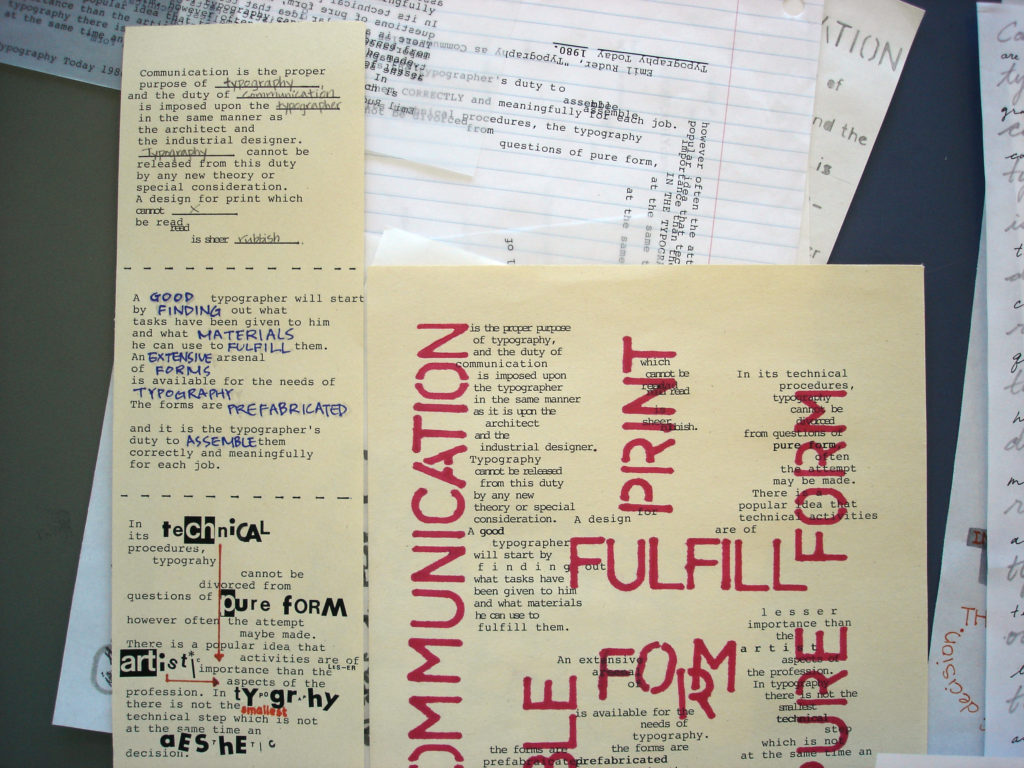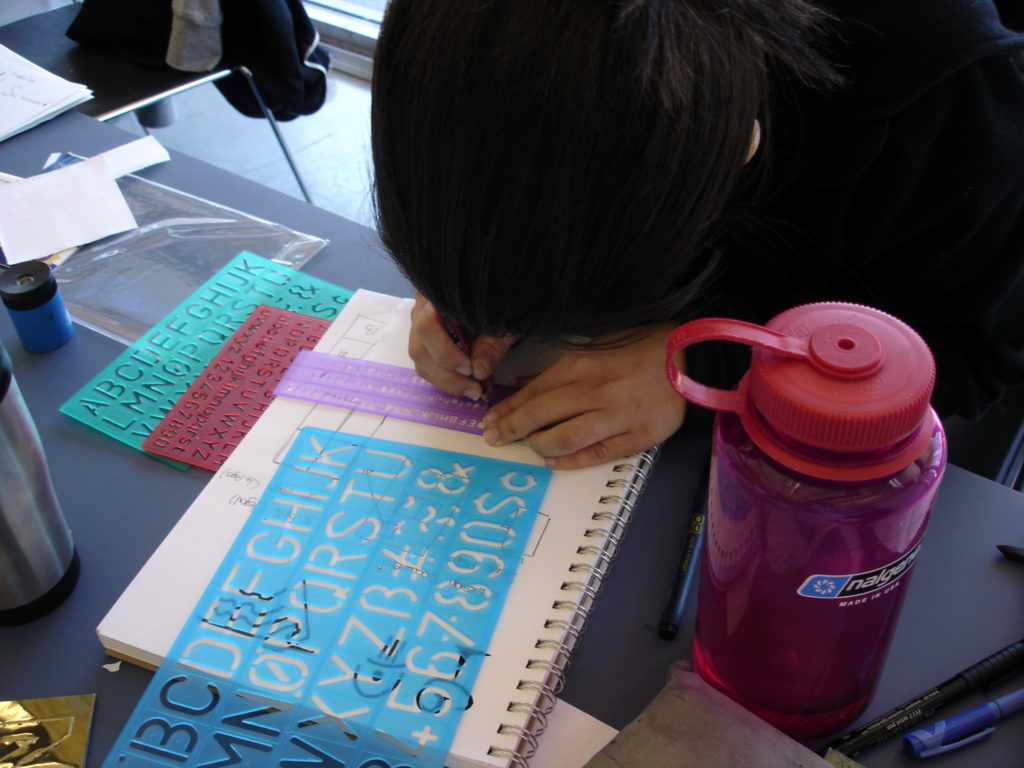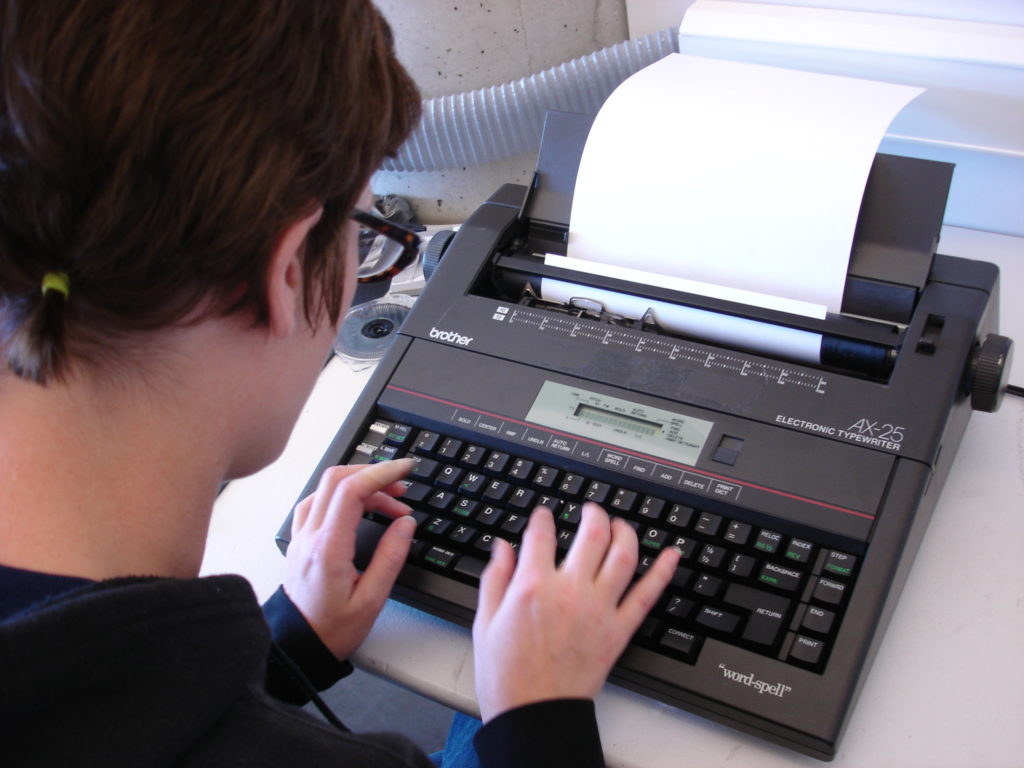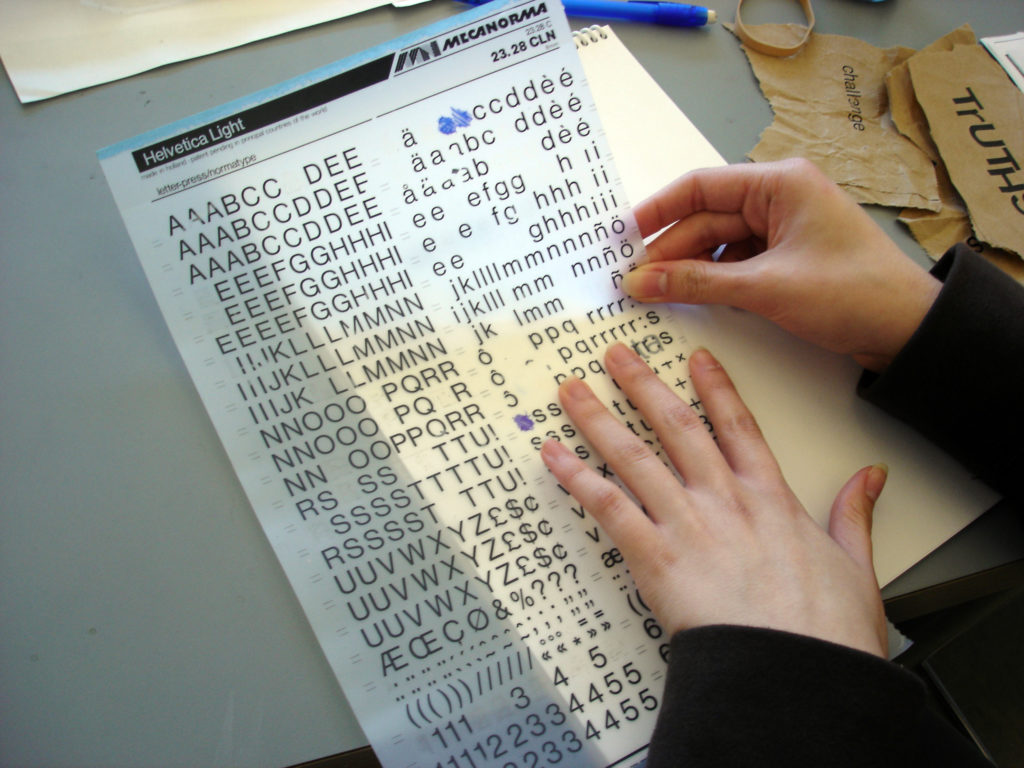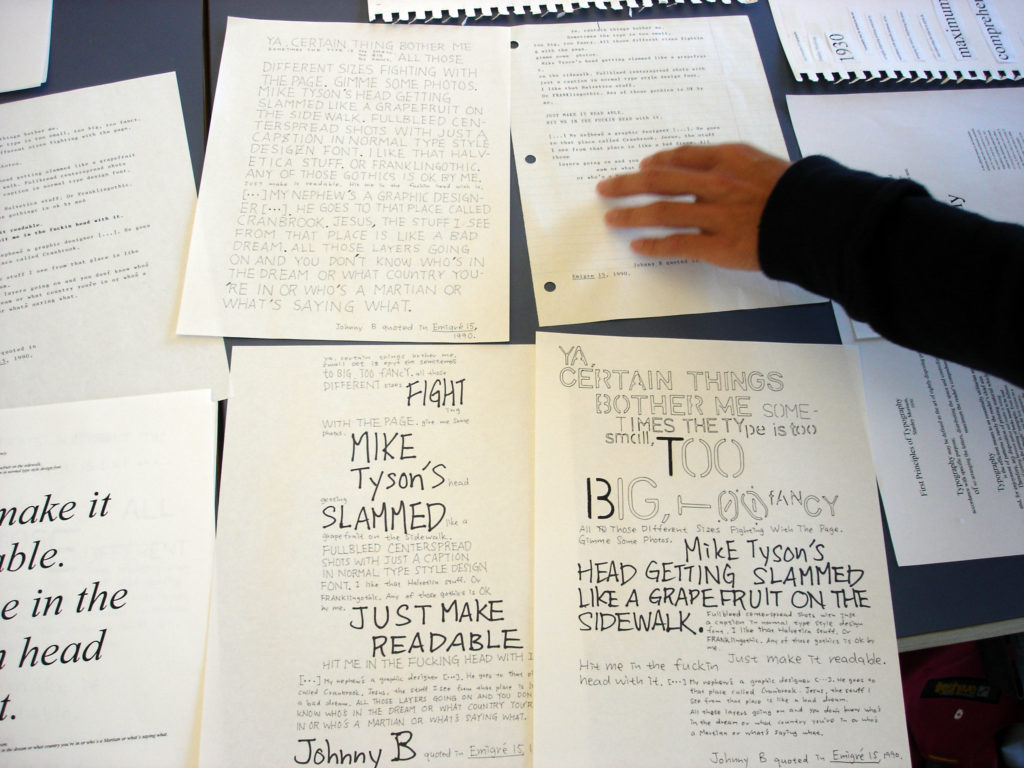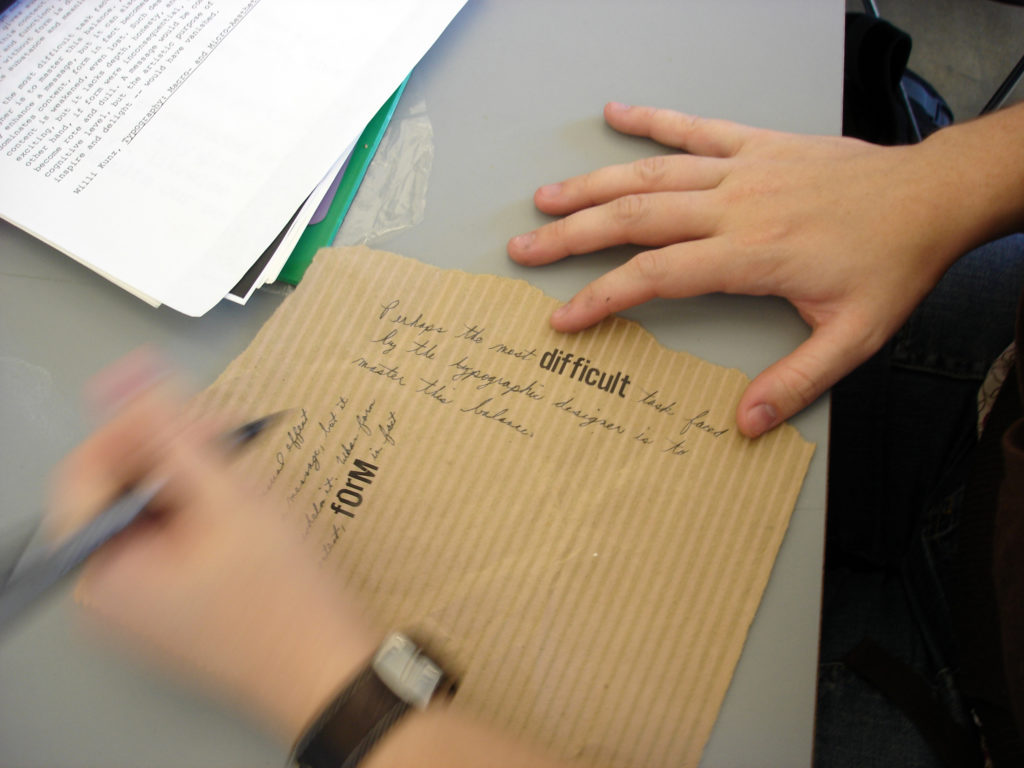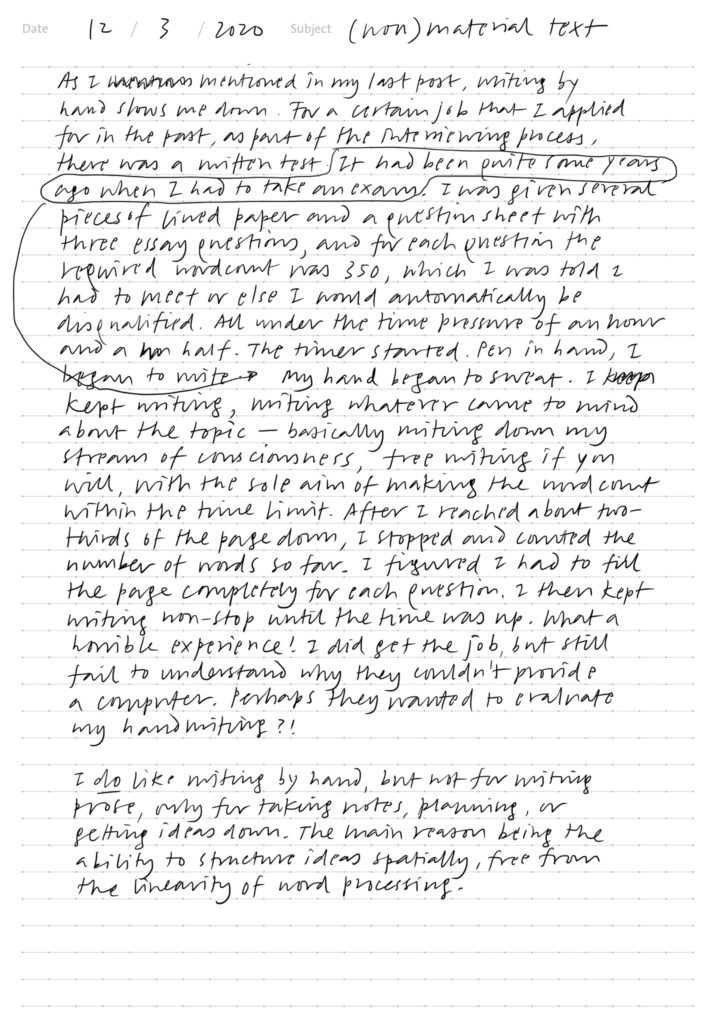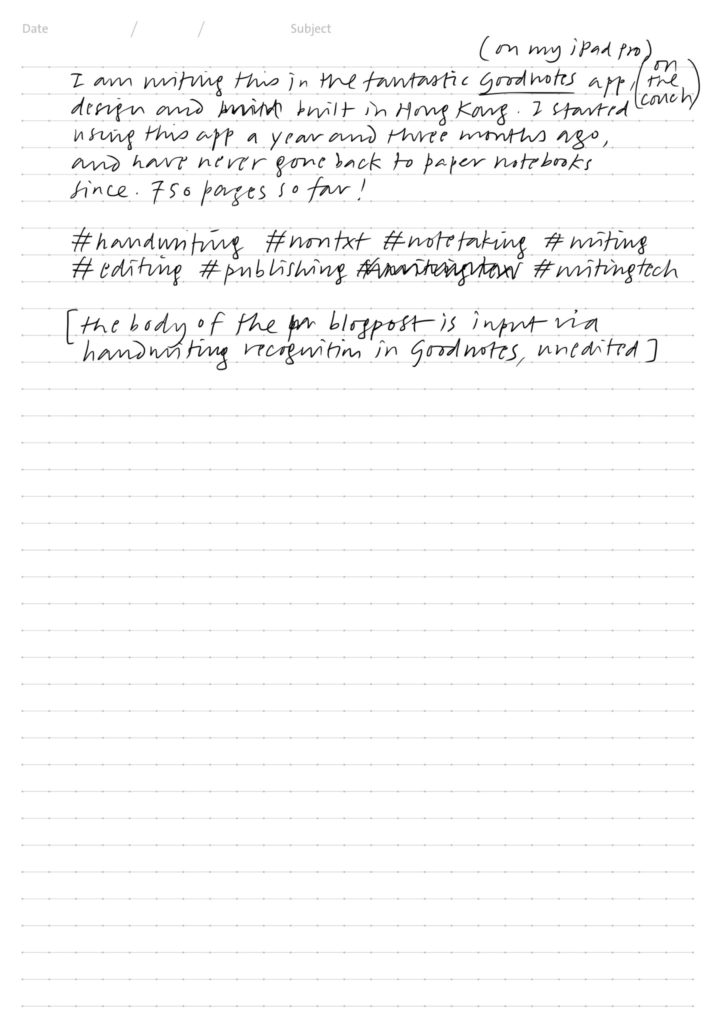With the return of Covid-19 yet again in Hong Kong, this weekend was spent entirely at home, retro-computing. I installed Mini vMac, a classic Macintosh emulator and installed the Macintosh II ROM with System 7.1, and downloaded a whole bunch of obsolete software that I used in the 1990s. A lot of fun.
I’m writing this blog post in Microsoft Word version 5.0, what I used to write on my first computer, an LC475 that my parents bought me in 1993, running System 7.1. I rummaged through my old CD-ROMs and found a folder titled ‘Old floppies’. I found, to my horror (delight?) my GCSE coursework in Word 5.0: ‘Macbeth by William Shakespeare: the theme of ambition in the play’, ‘Napoleon: the ‘Animalist in Power’ (a response to Orwell’s Animal Farm, written and formatted like a newspaper article), ‘A political assassination’, ‘The rime of the ancient mariner’ (an interview based on the story) and ‘To what extent do national newspapers reflect all shades of public opinion?’. I realised that I didn’t really take up writing seriously as a ‘thing’ until I started using a word processor (I did learn word processing on the command line BBC Micro though but didn’t really take it seriously until I had my first Mac). Something about the fluidity of word processing that allowed me to explore ideas without committing them as tangible marks on paper. The freedom that everything I type is only but tentative was a key factor I reckon.
Typing now in this extremely low resolution Mac emulator is quite nostalgic, especially using this bitmapped version of Geneva 12, the default in the system text editor Teach Text. How I became productive in such a low tech digital environment back in the day is a bit hard to believe. It was also on this machine that I learned desktop publishing in PageMaker, and also PowerPoint (where I produced an ‘interactive’ school prospectus) and other things like Photoshop (version 2.5) and Illustrator.
During University I moved onto WordPerfect 2.1, which I found to be a much more sophisticated word processing package than Word was at the time, even though it was already somewhat outdated. I also found a bunch of stuff I wrote back when I was studying for my undergrad degree and could open it natively on the emulator.
More on retro Mac computing later.
